Nuclear potential of China: history and modernity. Part 1
Today, the PRC has the world's largest armed forces. In the most numerous on the planet of ground forces, the Air Force and Navy, new models of equipment and weapons are increasing in increasing flow. The Chinese leadership does not hide the fact that the outcome of the long-term reform of the PLA, which began in the late 80, should be the ability of the armed forces to resist on equal terms the armies of the main geopolitical rival - the United States.
In the PRC, large-scale development and research is underway in the framework of creating modern models of equipment and weapons. Chinese science and industry managed to significantly reduce the technological gap and in some areas to reach the modern level, without disdaining, however, frank copying and industrial espionage. Achievements in this area are regularly shown at international exhibitions and offered for export.
Chinese nuclear weapon and its means of delivery remain a closed topic. Chinese officials are extremely reluctant to comment on this issue, usually bypassing the general vague wording.
There is still no accurate data on the number of nuclear charges in the PRC deployed on strategic carriers. There are only approximate estimates of experts, based on the estimated number of deployed ballistic missiles and bombers. Naturally, with such a method for calculating nuclear charges, the data may be highly unreliable.
Practical work on the creation of Chinese nuclear weapons began in the late 50's. It is difficult to overestimate the scientific, technological and technical assistance in this matter received from the USSR. Several thousand Chinese scientists and specialists were trained in the Soviet Union.
Construction of uranium enrichment plants in Baotou and Lanzhou began with the help of the USSR in 1958. At the same time, requests for the delivery of ready-made nuclear munitions to the PRC were rejected by the Soviet leadership.
In July, 1960, after the complication of Soviet-Chinese relations, nuclear cooperation with the USSR was curtailed. But this could not stop the progress of the Chinese atomic project. October 16 1964 at the Lobnor test site, located on a dried up salt lake in Xinjiang Uygur Autonomous Region, tested the first Chinese nuclear stationary explosive device based on 235 kilotons of uranium-22.
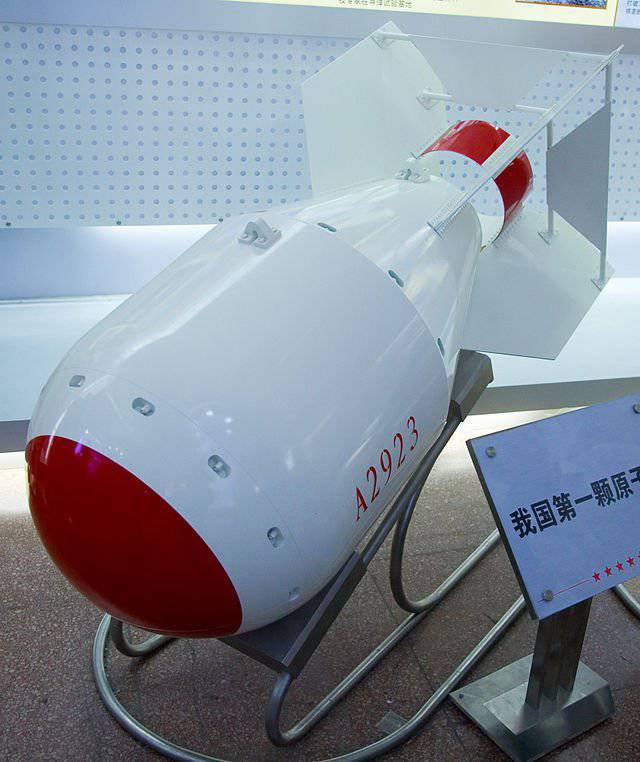
Seven months later, the Chinese carried out a test of the first combat model of a nuclear weapon — an aerial bomb. The Tu-4 heavy bomber, also known as “Hun-4”, dropped 14 on May 1965, the 35-kiloton uranium bomb, which exploded at an altitude of 500 m above the range.
The first carriers of Chinese nuclear warheads were the Tu-1953 piston long-range piston bombers supplied from the USSR in 25, the Harbin H-4 jet-launched bombers (a copy of the Il-5) and the Xian H-28 long-range bombers (a copy of the Soviet Tu-6) and the Xian H-16 long-range bombers (a copy of the Soviet Tu-XNUMX) and the long-range bombers Xian H-XNUMX (a copy of the Soviet Tu-XNUMX) and a long-range bombers Xian H-XNUMX (a copy of the Soviet Tu-XNUMX) and a long-range bombers Xian H-XNUMX (a copy of the Soviet Tu-XNUMX) and a long-range bombers Xian H-XNUMX (a copy of the Soviet Tu-XNUMX).
17 June 1967 of the year, the Chinese carried out a successful thermonuclear bomb test, the test was carried out at the Lobnor test site. A thermonuclear bomb dropped from a H-6 aircraft on a parachute exploded at an altitude of 2960 m, the power of the explosion was 3,3 megatons. After this test was completed, China became the fourth thermonuclear power in the world after the USSR, the USA and the UK. Interestingly, the time gap between the creation of atomic and hydrogen weapons in China turned out to be less than in the USA, USSR, Great Britain and France.
Understanding the vulnerability of bomber aviation ballistic missiles were created and improved from the air defense assets, simultaneously with the creation of nuclear weapons in the PRC.
Back in the middle of the 50s, samples of Soviet P-2 (modernized German V-2) missiles were delivered to the People's Republic of China, as well as assisted in their manufacture. The Chinese version received the name DF-1 ("Dongfen-1", East Wind-1).
The training squad with the Soviet P-2, formed in 1957, became the first compound of the new kind of troops, and the first missile division, loudly called strategic, appeared in the 1960 year. At the same time, the formation of the "Second Artillery Corps" of the PLA, an analogue of the Russian strategic missile forces, began in China.
After setting on the experimental combat duty of the short-range Soviet missiles P-2, by 1961, the People’s Liberation Army of China already had several regiments equipped with DF-1 missiles, which were aimed at Taiwan and South Korea. However, the technical reliability coefficient of the DF-1 rockets was low and did not exceed the value - 0,5. In other words, only 50% missiles had a chance to hit the target. In this regard, the first "Chinese" ballistic short-range missile (BRMD) DF-1 remained essentially experimental.
The first Chinese ballistic missile, produced in significant quantities and equipped with a nuclear warhead (YBC), was the DF-2. It is believed that when it was created by Chinese designers, technical solutions used in the Soviet P-5 were used. The rocket is made single-stage with a four-chamber sustainer liquid-propellant rocket engine. Kerosene and nitric acid were used as propellant components. DF-2 had a firing accuracy (KVO) within 3 km with a maximum range of 2000 km, this missile could already hit targets in Japan and in a large part of the USSR.
October 27 1966, the BR DF-2 was tested with a real nuclear charge, flying 894 km she struck a conditional target at the site Lobnor. The DF-2 was initially equipped with a monoblock nuclear warhead with an 20 CT power, which was very modest for a strategic missile, given the large QUO. And only later in the 70-x managed to bring the power of the charge to 700 CT.

The DF-2 rocket was launched from a ground launcher such as a launch pad, where it was installed during the pre-launch preparation. Prior to that, she was kept in an arched shelter and was taken out to the launch position only after receiving the appropriate order. It took more than 3,5 hours to launch a rocket from a technical condition corresponding to constant readiness. On combat duty there were about 70 missiles of this type.

The first ballistic missile independently developed in the PRC was the DF-3 - a single-stage ballistic missile equipped with a low-boiling fuel rocket engine (the oxidizer is nitric acid, the fuel is kerosene). After the refusal of the USSR to provide access to materials on P-12, the Chinese government at the beginning of 1960-s decided to develop its own MRBD with similar characteristics. DF-3 entered service in 1971 year. Flight range was up to 2500 km.
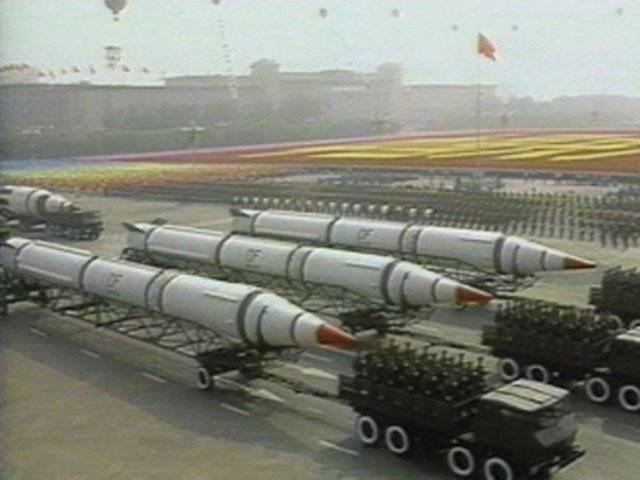
The initial targets for the DF-3 were two US military bases in the Philippines - Clark (Air Force) and Subic Bay (Navy). However, due to the deterioration of the Soviet-Chinese relations to 60 PU were deployed along the borders of the USSR.
In 1986, the production of an improved version began - DF-3A with a range of 2800 km (up to 4000 km with a lightweight warhead). The upgraded DF-3A, when placing the launch sites in the north-west of China, was able to sweep about half of the territory of the USSR.
At the end of 80, China delivered up to 50 DF-3A missiles with a specially designed high-explosive warhead to Saudi Arabia. Where are they in service so far. According to experts, these Saudi missiles equipped with conventional warheads, due to their low accuracy, do not have special combat value and can only be used for strikes on large cities.
In the PRC, the DF-3 / 3А missiles were decommissioned, and the DF-21 medium-range missiles were replaced in the front-line parts. Removable weapons MRBD DF-3 / 3А are actively used in various kinds of tests developed in the PRC missile defense systems and radars.
On the basis of the DF-3 at the end of the 60-x the BR DF-4 was created, it is also equipped with a LRE, but it has a second stage. At the beginning of 1975, the first missiles of this type entered the troops.
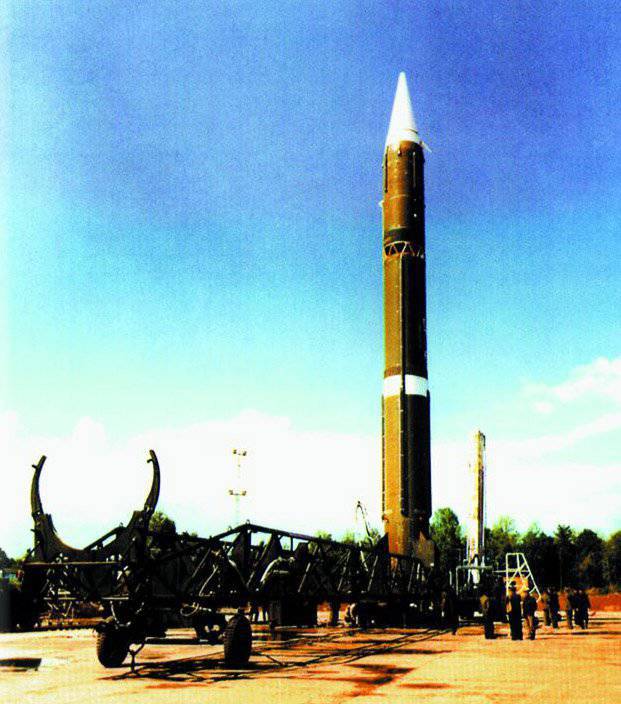
A rocket weighing more than 80000 kg and a length of 28 m can deliver a charge up to 4800 kg to a distance of 2200 km (standard combat equipment is a thermonuclear monoblock warhead with a power up to 3 Mt). Firing range BR DF-4 enough to "sweep" the entire territory of the USSR and the American bases in the Pacific. It was then that DF-4 and received the unofficial name "Moscow rocket"
The DF-4 was also the first Chinese missile deployed in the silo, but in an unusual way. BR was only stored in the mine, before starting it rises with the help of a special hydraulic lift to the starting table.
As of 2007 year, before the 20 DF-4 missiles were still in service with China. It is assumed that by 2015 they must be decommissioned.
The development of ballistic missiles in the PRC gave a powerful impetus to the development of rocket and space technology. In 1970, the Changzhen-1 launch vehicle based on the DF-4 launched the first Chinese satellite into space.
The first Chinese Jiuquan space center created in 1958 was originally intended for test launches of ballistic missiles. Jiuquan Cosmodrome, located on the edge of the Badan-Jilin desert in the lower reaches of the Heihe River in Gansu Province, is often called the Chinese Baikonur. This is the very first and until 1984 of the year the only rocket and space range of the country. It is the largest spaceport of China (its area is 2800 km²) and the only one used in the national manned program.
Initially, the 80-x was adopted by a three-stage heavy-duty ICBM DF-5. On the rocket "Dongfeng-5" asymmetric dimethylhydrazine (UDMH) is used as a fuel, the oxidant is nitrogen tetroxide. The launch weight of the 183-190 rocket, the payload weight is 3,2 tons. The warhead is a thermonuclear rocket with a capacity of 2-3 Mt. Accuracy of fire (KVO) at a maximum range of 13000 km is 3-3,5 km.
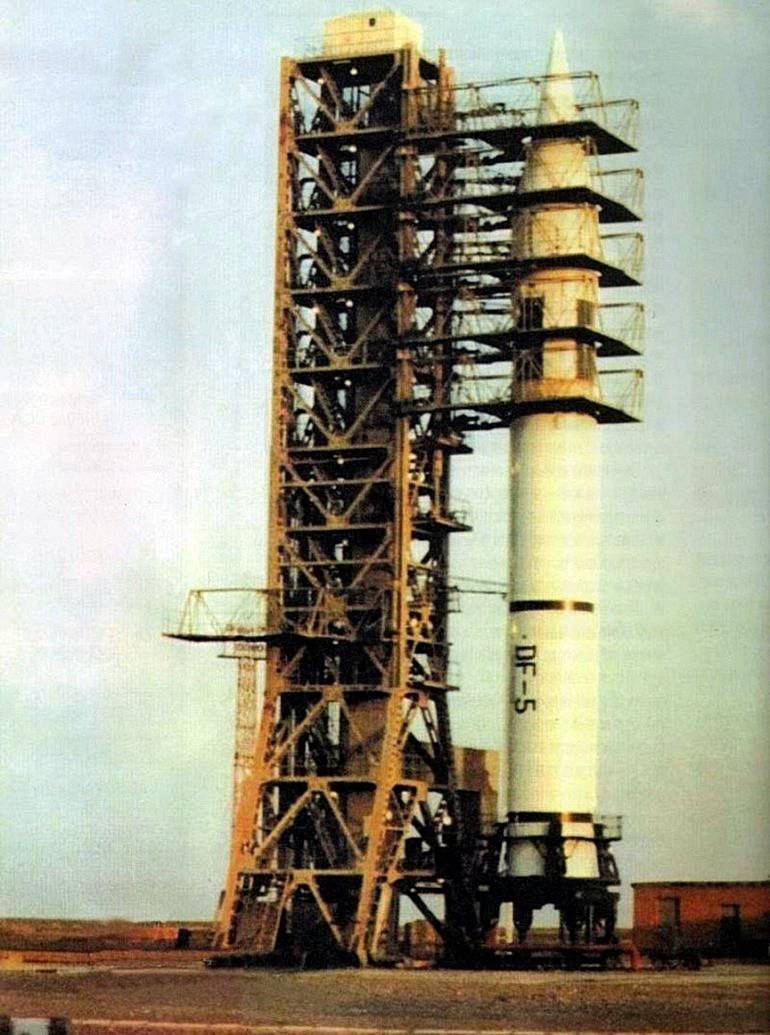
It was the first Chinese truly intercontinental rocket. The DF-5 MBRs are placed in reinforced single silo launchers (silo silos) under the cover of numerous false silos. But according to experts, the level of protection of Chinese silos by today's standards is clearly not sufficient, and differs from the similar indicator for Soviet and American ICBMs by several times. The technical readiness of the ICBMs to launch is 20 minutes.
Within the limits of the reach of this complex, the mine launchers of which are deployed at the bases of Liaoning and Xuanhua, hit objects throughout the United States, Europe, the USSR, India and a number of other countries. The delivery of the DF-5 ICBM on combat duty was extremely slow, partly hampered by the parallel work on the space launch vehicle at its base. All were deployed about 20 MBF DF-5.
At the end of the 1980-ies, the ground-based ICBM DF-5А was created with an MFR. This version of the ICBM was put into service in the 1993 year. It differs from the basic modification by the presence of a split head for individual targeting (MFR), it has 4-5 warheads with a charge power of 350 Ct. The maximum firing range with the MFV is 11000 km, in the monoblock version - 13000 km. The upgraded inertial control system ensures the accuracy of the hit (KVO) of the 500 m. At the end of the 90-s, the PLA Second Artillery Corps had three brigades equipped with this type of ICBM ). To date, China’s 803-804 ICBM DF-812А is equipped with split warheads, half of which are constantly aimed at the United States.
According to open media publications in the United States, China has produced from 20 to 50 such ICBMs. Based on the technical solutions and units of the DF-5 ICBMs, Chinese engineers and designers have created a number of variants of the “Long March” series of space launch vehicles, which have a similar layout to the ICBMs.
By the middle of 90, Chinese strategic nuclear forces (SNF) had more than a hundred ICBMs and MRBMs capable of hitting targets in Russia and the United States. A major disadvantage of Chinese ballistic missiles developed in 60-70-s was their inability to participate in a retaliatory strike because of the need for a long pre-launch preparation. Moreover, in terms of their level of protection from the damaging factors of nuclear weapons, Chinese silos were significantly inferior to Soviet and American missile mines, which made them vulnerable in the event of a sudden “disarming strike”.
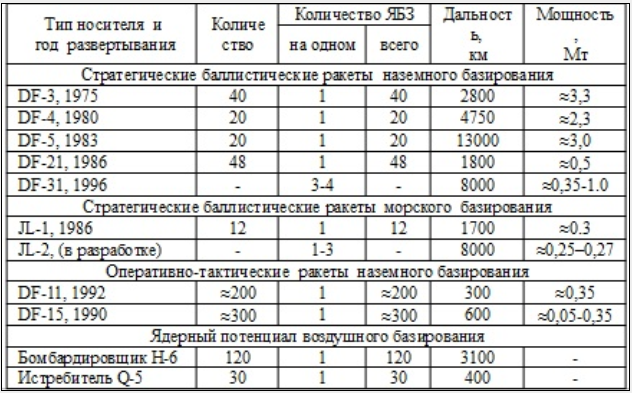
In addition to ICBMs in China, work on shorter-range missiles continued in the 70-80s. At the end of the 80-x, the first Chinese solid-fuel rocket DF - 11 entered service. Unlike rockets with LRE, which required a long pre-launch preparation process, this indicator on DF - 11 does not exceed 30 minutes.
A single-stage rocket weighing 4200 kg can carry an 500 kg warhead to a distance of up to 300 km. DF - 11 is installed on a Chinese-made mobile all-terrain chassis WA2400 8х8, the prototype of which was the Soviet MAZ-543.
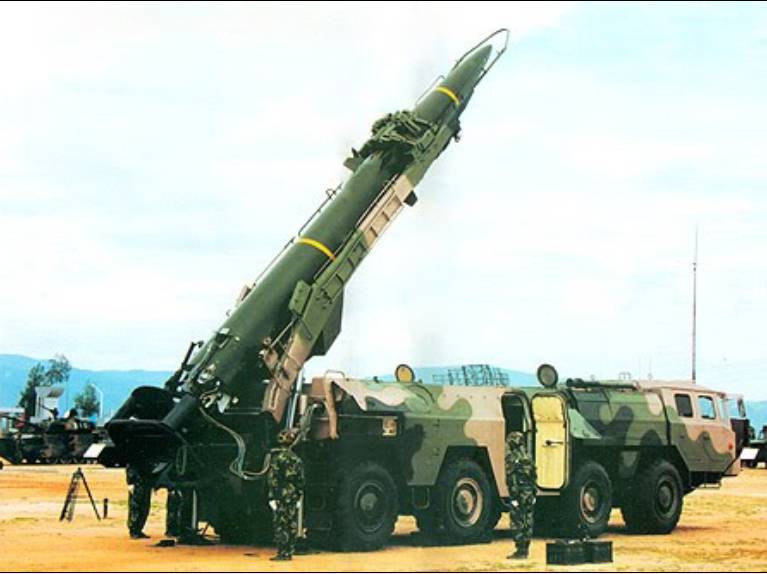
The upgraded version of the DF-11A, which has increased firing range and increased accuracy to 500 km, entered service with the Chinese army in the 1999 year.
Initially, an inertial navigation system and radio control were used on the DF-11, which provided the 500-600 cwc. The DF-11A modification uses a combined inertial-satellite guidance system with optical correction, which made it possible to reduce the CWO to 200 m.
As the Chinese representatives say, DF-11 / 11A was created mainly for sale abroad (deliveries were made to Pakistan and Iran) with a high-explosive warhead. But there is no doubt that a nuclear warhead was developed for these missiles in the PRC. Currently, the number of DF-11 / 11A in the PLA is estimated for 120-130 launchers, most of which were concentrated near the Taiwan Strait.
In 1988, the first armament of the operational-tactical missile system DF-15, also known as M-9, was presented at the arms exhibition in Beijing. The 6200 kg missile with a warhead of 500 kg has a range of up to 600 km. DF - 15 uses a Chinese-made eight-wheel cargo platform that provides high mobility and maneuverability. Since 1995, 40 installations have been purchased, and by the beginning of 2000, China has already produced around 200.
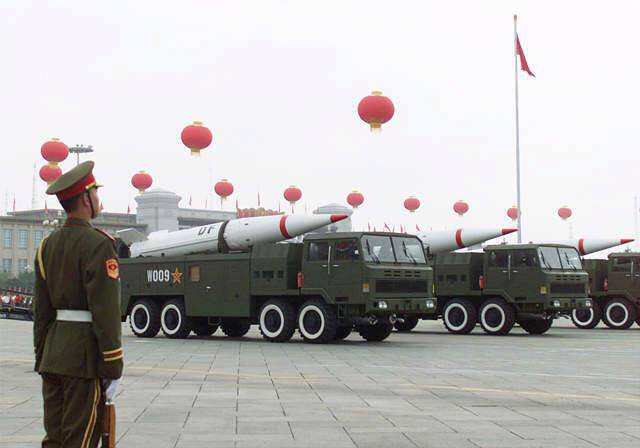
In 2013, the latest operational tactical missile system DF-15C was shown. The main feature of the new complex, in contrast to the base model DF-15, was a rocket with an altered head.
The warhead of the rocket uses for guidance a duplicate satellite navigation signal and an active radar homing system, which provides increased accuracy of the complex. This missile system can be used to destroy particularly important objects such as airfields of a potential enemy, important administrative buildings and industrial centers.
As a combat load, the DF-15 can carry a 50-350 CT nuclear charge or be equipped with various types of non-nuclear warheads. Published information on the availability of high-explosive and cassette warheads. Recently, in the Chinese media, upgraded operational-tactical missile systems of the type DF-15С became known as DF-16.
Chinese military leaders and specialists did not remain indifferent to the successful development of land-based cruise missiles in the USSR and the USA. After the collapse of the USSR, technology and documentation from this area were obtained in Ukraine.
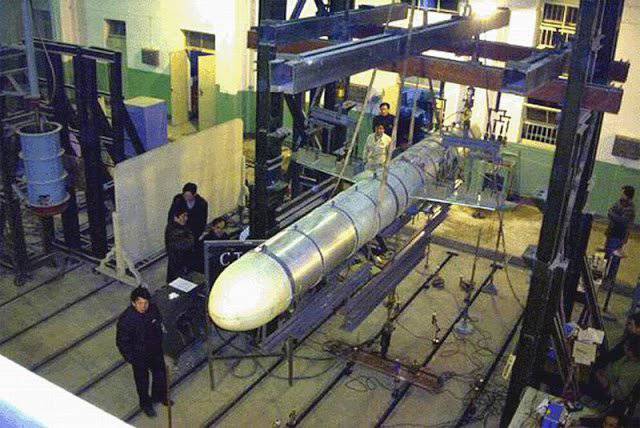
According to experts, there are currently several dozen ground-based cruise missiles (RNLs) Dong Hai 10 (DH-10) in the arsenal of the PRC. They were created on the basis of the Russian X-55 long-range cruise missile.
This complex is a mobile unit on a four-axle off-road chassis with three transport and launch containers. The rocket is designed for accurate destruction of ground targets within a radius of up to 1500 km. It is assumed that it has a combined guidance system, combining inertial, correlation along the contour of the terrain and satellite guidance systems. Missile can have a nuclear or conventional warhead. The main part of the DH-10 missiles is based along the east coast of mainland China, not far from Taiwan. The launch of the KRNB DH-10 occurred at the end of the 2000-x.
Taking into account the successes achieved in the creation of short-range solid-fuel missiles in the PRC in the middle of 70, the DF-21 medium-range solid-fuel missile program was launched, which was to be replaced on combat duty DF-2 and DF-3 / 3.
In the second half of the 1980-s, a new two-stage solid-fuel medium-range missile DF-21 (Dongfeng-21) was created. A missile with a starting weight in 15 is capable of delivering warheads to a range of up to 1800 km. Significant progress in the field of electronics allowed the Chinese designers to create a new, more advanced rocket control system. Accuracy of hit (QUO) was brought to 700 m, which together with the powerful head part in 2 Mt allowed solving a greater number of strategic tasks. In the middle of the 90-x BRK with a DF-21A missile began to enter into service with the PLA missile units, replacing the old-type liquid missiles.
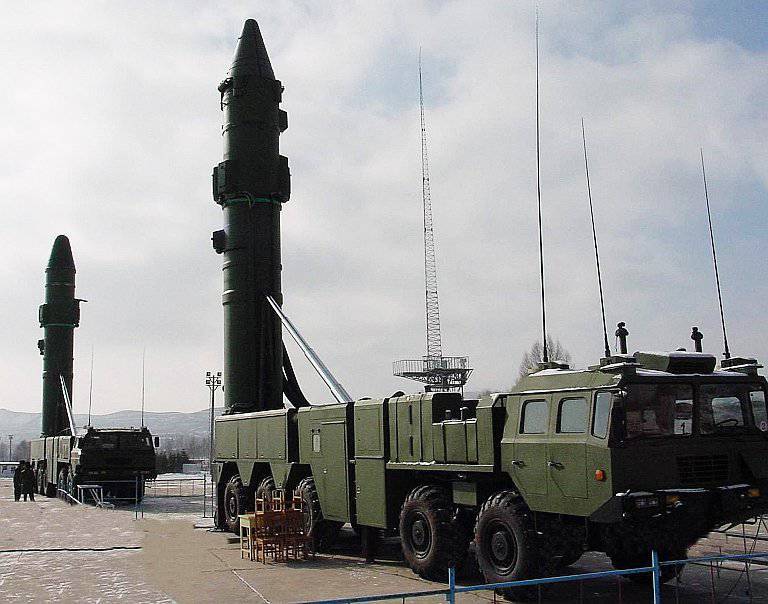
Initially, the 2000-x entered service received a new version of the DF-21C. The inertial control system provides the missile with firing accuracy (KVO) up to 500 m. Thanks to basing on mobile missile launchers, the system is provided with the ability to exit from a “disarming strike” by means of air attack and ballistic missiles. Recently, a new version of the DF-21 complex has been mentioned, which in China has received the designation - DF-26.
The next major achievement of the Chinese designers and rocket scientists was the creation and launch into production of a mobile mobile ground-breaking intercontinental rocket complex DF-31. This development was a huge breakthrough in China’s nuclear weapons. The use of solid fuel on the DF-21 and DF-31 rockets reduced the pre-launch preparation time to 15-30 min.
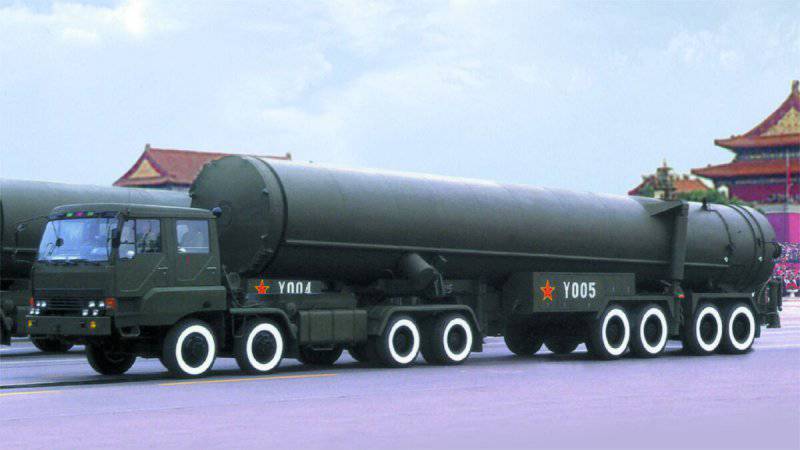
Work therefore rocket complex began in the middle of the 80-ies. From the very beginning, Chinese engineers were tasked with ensuring a mobile launch of a rocket from unpaved mobile complexes like the Russian Topol ICBMs.
The main problem faced by the Chinese is the development of solid mixed rocket fuels (by the way, the Soviet Union also experienced the same difficulties at the time). For this reason, the first launch of the rocket, scheduled at the beginning of the 90-s, was repeatedly postponed. It is known that during the experimental launch of the DF-31 in April 1992, the rocket exploded. In this case, 21 people died, and 58 was injured. The subsequent launch was also unsuccessful, and the first successful launch took place in 1995. This was followed by three more successful launches — two in the 2000 year, during the PLA military maneuvers, and a third in the 2002 year.
In the best Soviet traditions, the Chinese 1 of October 1999 of the year demonstrated a new rocket at a military parade in honor of the 50 anniversary of the PRC. Three missiles HY473 with TPK, which allegedly contained new missiles, passed through the central square of Beijing. They are a standard 4-axle truck with a semi-trailer with 8 axles and are no longer like combat launchers, but transport-loading machines. It is obvious that, compared with the Russian Topol ICBMs, these machines have very limited maneuverability and cannot be recognized as full-fledged combat systems.
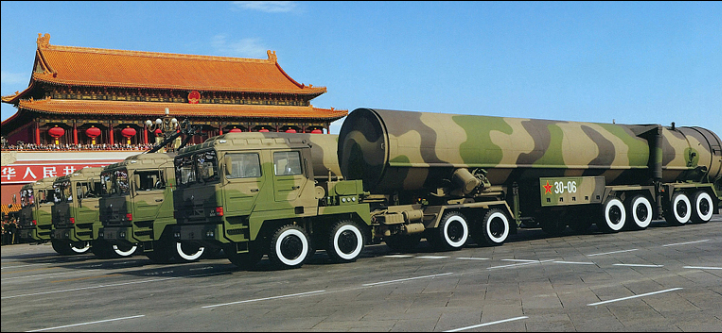
Real TTH ICBM DF-31 is one of the most important military secrets of China. According to the media, a three-stage solid-fuel rocket with a length of 13 m, a diameter of 2,25 m and a launch mass of 42 t is equipped with an inertial astronavigation guidance system. Accuracy (CEP - probable circular deviation) is, according to various estimates, from 100 m to 1 km. The ICBM can be equipped with a monoblock nuclear warhead with a capacity of up to 1 Mt, or three individual targeting warheads with an 20-150 CT capacity. In terms of its mass, this missile is almost similar to the Russian Topol and Topol-M ICBMs (presumably 1,2 tons).
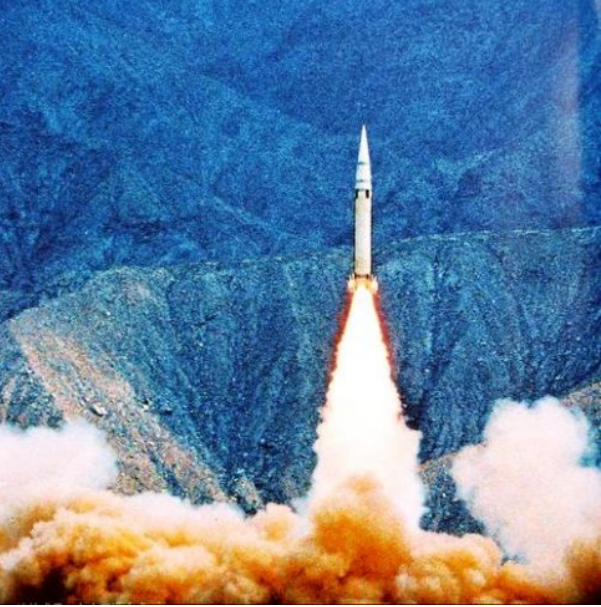
It is believed that in the mobile soil-based mode, the DF-31 can be launched within 30 minutes (exit from the garage, delivery time to the starting position, raising the TPC to the vertical position and launching the ICBM). Probably, the Chinese used in this rocket so-called. a cold (mortar) launch, like on TPU ICBM of the Topol series (launching a rocket to a height of 30 m by means of a pressure steam generator and the subsequent activation of the first stage of the ICBM).
The upgraded version of the DF-31А is a three-stage solid-fuel intercontinental ballistic missile launched from a mobile launcher. Although it is able to overcome more than 11 200 km, the DF-31A rocket has a shorter range and carries a smaller payload than the Chinese mine-based DF-5A ICBM. According to the US Department of Defense, around 10 DF-31A missiles are deployed in China.
According to American estimates, DF-31 missiles with a range of about 7200 km cannot reach the territory of the mainland USA from Central China. But the missile modification, known as the DF-31A, has a firing range of more than 11200 km and can reach most of the continental United States from central China.
According to experts, the new modification of the DF-31A complex can be equipped with three separable warheads with individual-directed warheads. In addition, the new rocket has the ability to autonomously clarify the location of the target and correct the flight path on the ballistic segment. For guidance of the rocket can be used satellite navigation system "Beidou" (Chinese equivalent of GPS).
Recent satellite images show that China is creating launch positioning areas for its new mobile intercontinental ballistic missiles DF-31 / 31A in the central part of the country. Several launchers of the new DF-31 / 31A MBRs appeared in two districts of the eastern part of Qinghai Province in June of the 2011 year.
25 September 2014 of the year China conducted the first test launch of a new version of a ground mobile ICBM with an index of DF-31B. The start was made from the landfill in the central part of China. The rocket is a further development of the DF-31A. In the past three months, the PLA Second Artillery Corps has executed at least two launches of DF-31 missiles.
Currently, heavy liquid-fuel ICUs DF-5 are being replaced by solid-fuel mobile ICBMs DF-31 and DF-31А. According to a report by the US Department of Defense, the PRC has made significant progress in updating the fleet of its ICBMs. The number of mobile solid-fuel ICBMs DF-31 and DF-31A for the first time exceeded the number of old liquid-mine ICBMs DF-5. According to the report, there are about DF-5 missiles - 20, DF-31 and DF-31A missiles - around 30.
In 2009, in open sources, the mention of a new Chinese solid-fuel ICBM - DF-41 appeared. It is believed that, thanks to the increased range compared to other solid-fuel missiles, it will finally force out the old DF-5 liquid missiles. It is assumed that it has a range of 15000 km and carries a divided warhead containing up to 10 warheads and means of overcoming missile defense.
Given that even the lighter mobile Chinese ICBM DF-31 have certain difficulties in transportation, it can be assumed that the new complex DF-41 will be designed mainly for mine-based.
Based on:
http://russian.china.org.cn/
http://www.globalsecurity.org
http://www.globalmil.com
www.ausairpower.net
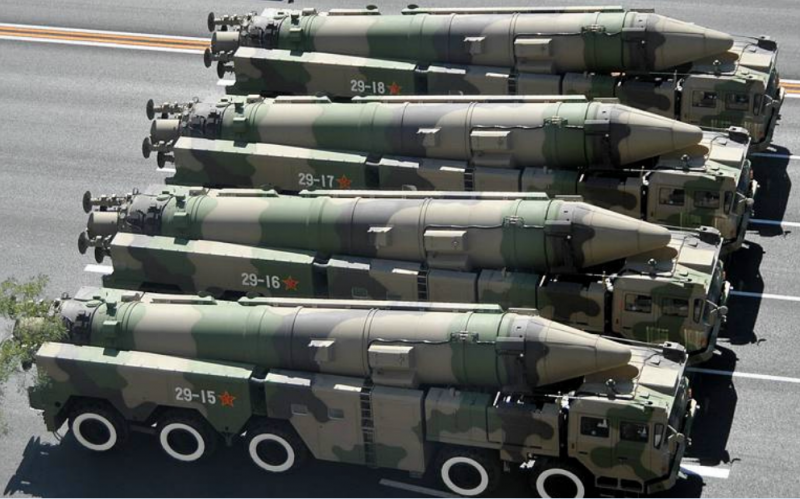
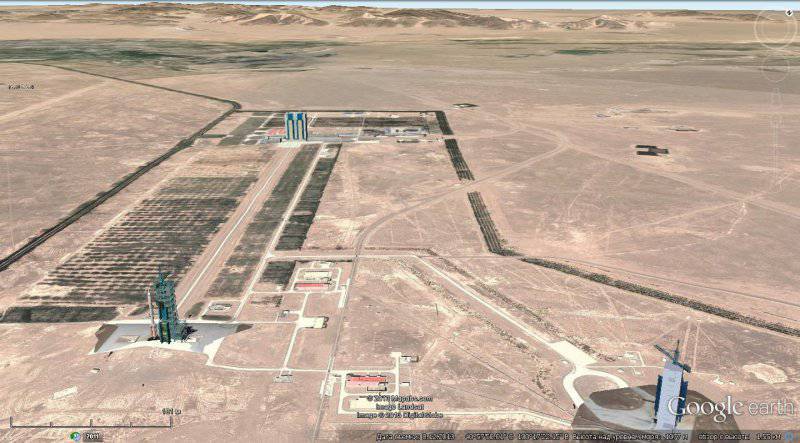
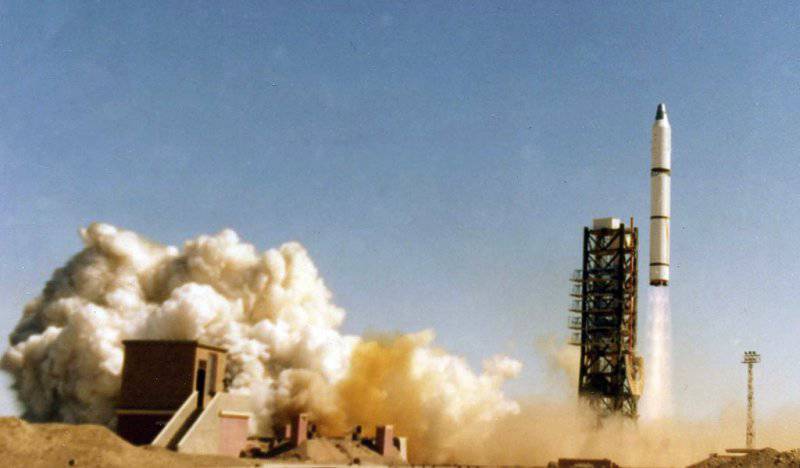
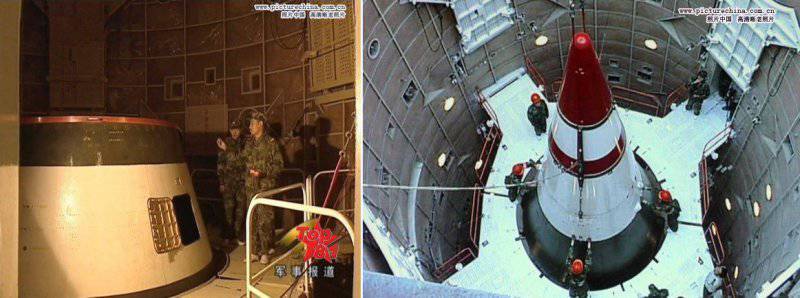
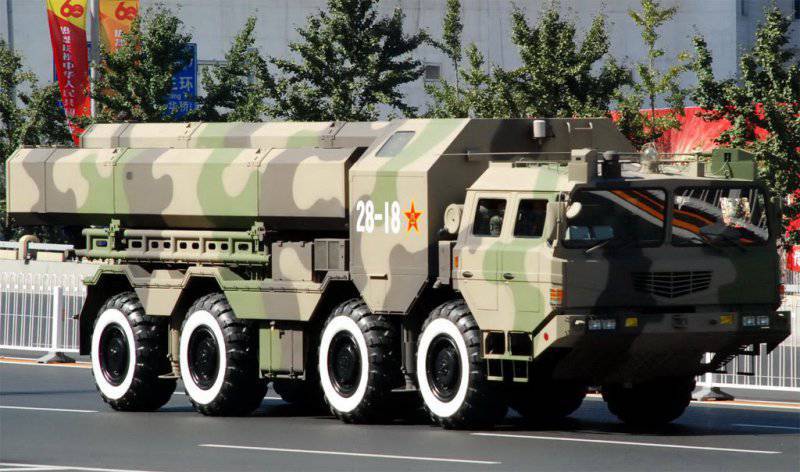
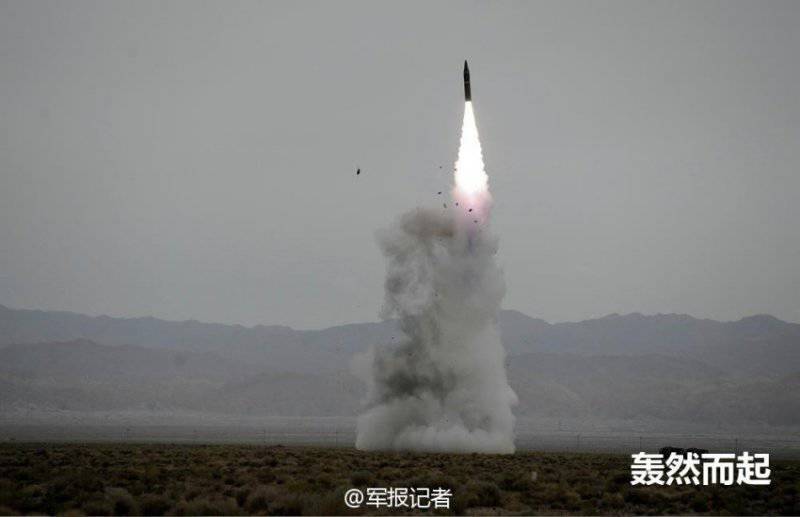

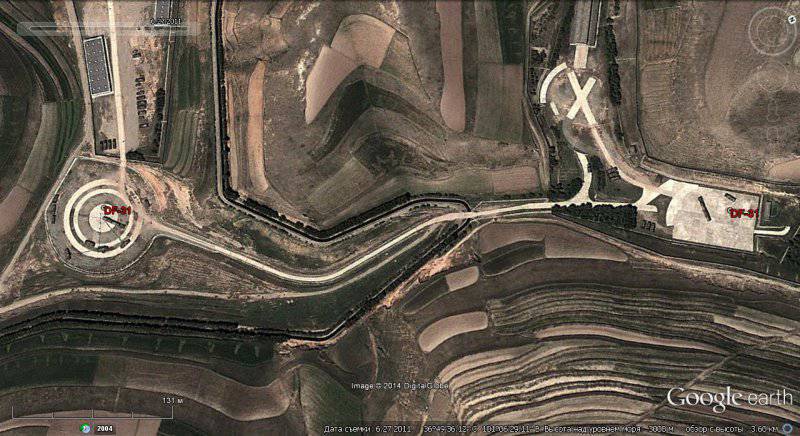
Information